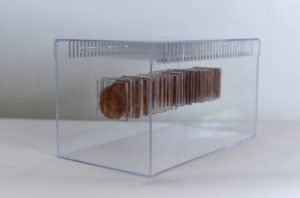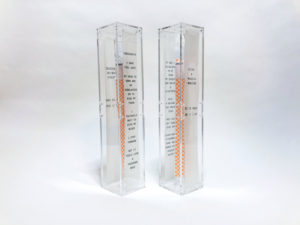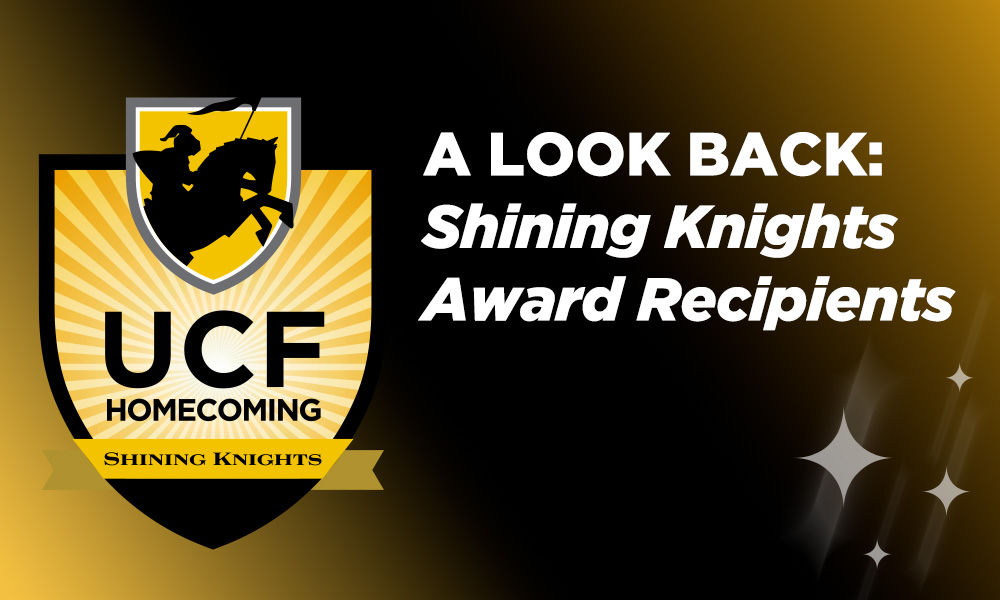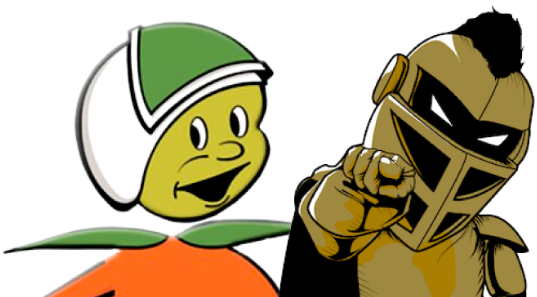UCF Alumnus Memorializes Pulse Tragedy Through Art
Last month, UCF art grad Forrest Lawson ’18 bested more than 400 artists for top honors and a $50,000 award at a regional competition for his piece 6/12/2016, a sculpture he created to memorialize the Pulse tragedy, honor its victims and communicate the emotions and responses the shooting awakened across communities.
Born and raised in a small town in between Naples and Sarasota, Punta Gorda (“we call it the In Between because there really is nothing going on there”), Lawson somewhat explored his creativity growing up, but hadn’t really thought of it as a future career path.
“I was always drawing very macabre things, because I was a gay teen in the closet,” Lawson says. “But I never really explored it until I got to college because back then it was like I had to become a dentist or a doctor.”
Lawson, who met his now-husband during their sophomore year of high school, was bullied growing up for being gay long before he even came out. Because of this, he and his husband dated secretly for a few years until officially making their relationship public following graduation.
“It was more of a survival thing; I was just denying it because I didn’t want to have to confront other people or myself,” Lawson says.
After high school graduation, Lawson attended Florida Gulf Coast University, before transferring to Valencia College to major in architecture. But once he realized he was having more fun building actual models, he took advantage of the DirectConnect to UCF program and switched to majoring in art by the time he arrived at UCF in 2014.
“Coming to UCF was a great experience for my work and growth,” Lawson says. “I just never really felt the sense of community that I feel in Orlando anywhere else. For me, UCF was the right choice.”
The decision Lawson made to switch from architecture to art was in large part due to the joy he found in the creation of tangible objects.
“I think I have control issues, even still, because so much of my life and coming out felt out of control,” Lawson says. “So I think for me, having that control over tangible clay and making sculptures, it makes me feel a little more stable.”
During his years at UCF, Lawson was able to implement a community aspect to his work by doing more outreach-driven projects, taking his initial vision and allowing others to participate in its execution.
Shortly after the Pulse tragedy in Orlando on June 12, 2016, Lawson and several of his friends came across an article that said a long-standing FDA ban had been lifted. The ban in question specifies, “Men who have had sex with other men (MSM), at any time since 1977 (the beginning of the AIDS epidemic in the United States) are currently deferred as blood donors.” When Lawson showed up to donate, however, it became clear that the article was false — the ban was still very much in place.
“We had literally just been gunned down in what we kind of equated to a church for us,” Lawson says. “We had been told at that point we were worthless because somebody wanted us dead. And so, we wanted to help. We wanted to donate blood and help our brothers and sisters. But we couldn’t. It was a slap in the face, just, ‘no, you’re still worthless, don’t bring that here.’ It was a kick when we were down.”

Most of Lawson’s work is a response to his own anger. And being turned away from donating blood and doing all he could to help the victims of Pulse made him angry. So he got to work creating the sculpture Better Blood (seen right).
“Artists have a task, in society, to paint the revolution in a way that people can connect with,” Lawson says. “I want to use the platform that I have in whatever capacity that I have to communicate that ignorance and hatred are not acceptable.”
While creating Better Blood was a helpful experience for Lawson to express his frustration, he was still eager to create something that would memorialize the Pulse tragedy and honor the victims.
This motivation would eventually become 6/12/2016, which involves 49 cubes with the names of the victims hand-stamped and their dates of birth. The cubes also contain the two commonalities between each of the 49 victims – their death date and the wristband they were wearing the night of the shooting. Lawson posted a nationwide call for people to submit their response to the tragedy and each of the narratives selected are juxtaposed to a name and wristband. Putting together 6/12/2016 took Lawson about five months. He describes it as a long and emotionally exhausting process.
Putting together 6/12/2016 took Lawson about five months. He describes it as a long and emotionally exhausting process.
“It definitely made me confront a lot of feelings that I hadn’t yet,” Lawson says. “I had feelings of alienation and separation anxiety after the shooting. Pulse was actually the first club that I’d ever gone to. So it was strange, especially going there and seeing the pictures. I don’t think there’s ever going to be a time where I’ll fully process it, but doing this at least did make me confront it.”
 This past May, 6/12/12016 and Lawson headed to Lake City, South Carolina to compete in the ArtFields competition. ArtFields began in 2013 with a simple goal to honor the artists of the southeast with a week’s worth of celebration and competition. This year’s event involved 400 artists showing pieces over the course of eight days, culminating in 12 awards presented. Lawson recalls feeling relieved after the smaller-in-dollar-amount prizes had been awarded because he was nervous about having to get up onstage and give a speech. He hadn’t begun to fathom he’d be the recipient of the grand prize of $50,000.
This past May, 6/12/12016 and Lawson headed to Lake City, South Carolina to compete in the ArtFields competition. ArtFields began in 2013 with a simple goal to honor the artists of the southeast with a week’s worth of celebration and competition. This year’s event involved 400 artists showing pieces over the course of eight days, culminating in 12 awards presented. Lawson recalls feeling relieved after the smaller-in-dollar-amount prizes had been awarded because he was nervous about having to get up onstage and give a speech. He hadn’t begun to fathom he’d be the recipient of the grand prize of $50,000.
“I whimpered and I cried in front of 400 people,” Lawson says while describing the surreal moment of his win.
For the most part Lawson has very responsible plans for his $50,000 reward – pay off student loans, help out with his upcoming move to the University of Georgia where he’ll soon be starting the MFA program– but he did cook a big meal for his friends and go out for his first filet mignon in six years.
Lawson knows that his success is due in large part to his willingness to push past doubters or those who may root against him by turning that negativity into something beautiful. His advice to up-and-coming artists is to do the same, even when that negativity may be on the inside.
“Research, read a lot, learn about galleries you should be in touch with. And stick with it,” he says. “It’s so cliche, but that doesn’t mean it isn’t real. Don’t let your inner saboteur talk you out of being creative if that’s what you’re meant for.”


